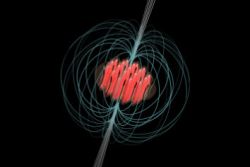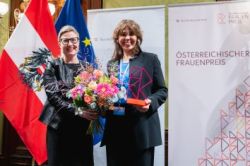
A collaboration between quantum physicists and astrophysicists, led by Francesca Ferlaino and Massimo Mannarelli, has achieved a significant breakthrough in understanding neutron star glitches. They were able to numerically simulate this enigmatic cosmic phenomenon with ultracold dipolar atoms. This research establishes a strong link between quantum mechanics and astrophysics and paves the way for quantum simulation of stellar objects from Earth.

Today sees the official launch of the FWF Cluster of Excellence for Quantum Sciences in Innsbruck. As part of the Excellence Initiative, the Clusters of Excellence are Austrian beacons of basic research. Quantum Science Austria (quantA) brings together over 60 research groups in Innsbruck, Vienna, Linz and Klosterneuburg.

Scientists led by Peter Zoller have developed a new tool for the measurement of entanglement in many-body systems and demonstrated it in experiments. The method enables the study of previously inaccessible physical phenomena and could contribute to a better understanding of quantum materials. The work has now been published in Nature.

Quantum physicist Francesca Ferlaino has been awarded the Grete Rehor National Award, presented for the first time this year, for her contribution to gender equality in the still male-dominated field of quantum physics and for the “Atom*innen” project she initiated. The national prize of 5,000 euros is awarded by the Austrian Federal Ministry for Women, Family, Integration and Media.
Read more …Francesca Ferlaino first Grete Rehor National Award winner

In physics, quasiparticles are used to describe complex processes in solids. In ultracold quantum gases, these quasiparticles can be reproduced and studied. Now, for the first time, Austrian scientists led by Rudolf Grimm have been able to observe in experiments how Fermi polarons – a special type of quasiparticle – can interact with each other. Their findings have been published in Nature Physics.